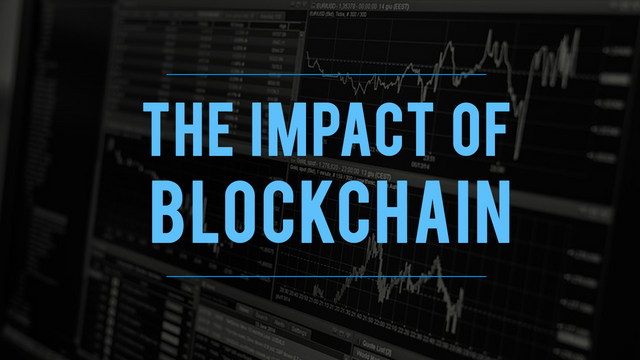The Impact of Blockchain: An Introduction
What is Blockchain?
A technology which pinpoints the peer-to-peer distributed log of timed transactions is the underlying foundation of which Blockchain is built upon. Through its introduction since the development of Bitcoin, many people have been engrossed in the price movement of the ever-exciting cryptocurrency however, are unaware of the technology that makes it possible.
Blockchain was introduced to work hand-in-hand with Bitcoin and its transactions. The ledgers, which runs on a distributed system, is not connected to one common processor. This forms the block-like architecture, where transactions are time-stamped and then formed into blocks. These blocks are then connected to the next block, forming a chain.
With central banks in full control of the ledger, the user of currencies built upon the Blockchain technology have full control of their own ledger. A method known as the consensus algorithm maintains the ledger and all copies are synchronised. This ever-growing technology will reshape the future of banking and currencies in general.
What forms Blockchain?
1. Consensus Algorithms:
The aim of this protocol is to ensure an agreement has been reached when new blocks are added to the already-built chain. This is done within a network. The protocol contains certain requirements and specifications that the new block must meet before being considered to enter the chain. This protocol also makes sure that all members of this network are in agreement when necessary before the addition of a new block.
Some of the rules include:
- Bitcoins must be received first before they are sent. This is to prevent the possibility of fraud.
- One member of the peer-to-peer network is chosen (at random) to fill an ordered array of instructions and transactions. This member is then awarded Bitcoins for doing so.
2. P2P networking:
Peer-to-peer networking is the general architecture that forms the Blockchain technology. As mentioned before, this network is distributed, and the removal of a centralised processor means that there is no single point of control. Although this may bring up the question of inconsistency between members of the network, the consensus algorithm ensures that information and data is up-to-date amongst all computers in the network.
3. A chain of... well, blocks:
Once the consensus algorithm has been met and new blocks are added to the chain, the amount of information within the network increases. This information must provide a link between itself and current existing information within the Blockchain.
What impact can Blockchain have?
With over 2 billion people globally without a bank account, the introduction of digital wallets married with the continuous growth of technology in general allows for a more feasible approach. The option of mobile and portable banking without having to go through fewer steps of verification of information appeals to a wider audience. This does not imply that commercial banks will be replaced anytime soon however, the potential admittedly remains.
So, are banks afraid of being replaced?
In recent years, commercial and investment banks have not ignored the introduction and development of this technology, but have embraced it in an array of forms. Throughout the adoption of this technology, it is estimated that the banking industry has saved approximately $18bn. For example, handling large loans and shares would be a lot more efficient as the technology, if used correctly, can minimise the margin for error.
The social impact that Blockchain has created can be defined as the potential revolution especially for developing countries. Such an infrastructure can improve and transform life in such countries, as seen by the previous example of a mobile phone.
The technology can also be implied to improve quality of many other industries. For example, this form of infrastructure could have been implemented in last years US Presidential Election. With many rumours floating around that Russia had hacked the voting systems, Blockchain could have prevented any instances or possibilities of this happening. A decentralised ledger that provides all data needed to accurately count and number votes based on different individuals using the peer-to-peer network could have added a layer of transparency of whether or not there was a form of manipulation.
What does the future hold?
Although the last year has seen a significant influx of interest in the development of this technology and its positive influences, it is not guaranteed that Blockchain can be the underlying technology that we use in our everyday routines.
With reference to the Financial industry, it seems too optimistic to assume that we can see a centralised financial system be replaced with this technology anytime soon. The current architecture is what forms our everyday lives and our means of interacting with finances and currencies.
Moreover, there would be an issue with security. As current transactions are monitored by regulatory bodies, such as the Financial Conduct Authority, the introduction of Blockchain would raise a few questions as it would be too much of a responsibility to hand over to the general public. This does not mean that Blockchain will have endless obstacles to overcome as it can be implemented efficiently in a variety of different sectors and countries to improve general quality of life.
It will be nothing but fascinating to observe how this technology evolves and adapts to the rapid changes of everyday life.
Check out more at Paradigm Resources!

